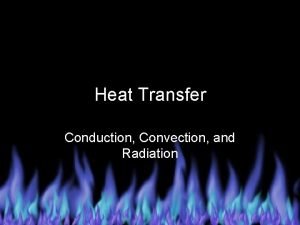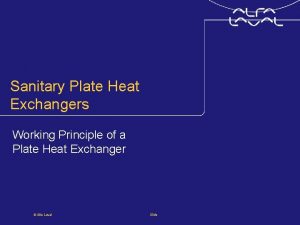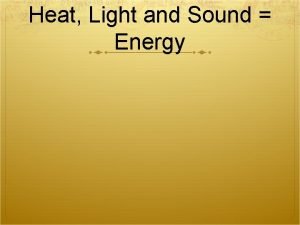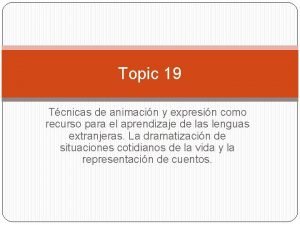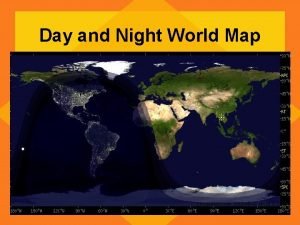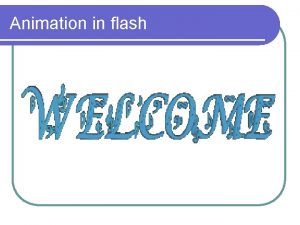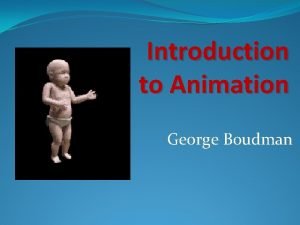Sound and Heat Sound See an animation of















- Slides: 15

Sound and Heat Sound See an animation of transverse and longitudinal waves 1

Sound and Heat Sound Transverse waves oscillate perpendicular to the direction of propagation. Properties: λ A v x y 2 Wavelength amplitude speed propagation direction polarization

Sound and Heat Sound Each point on a transverse wave oscillates perpendicular to the direction of propagation. Properties: T f A period frequency amplitude polarization T t 3 f = 1/T

Sound and Heat Sound Wave Equation Amplitude Wave Number Angular Frequency Propagation Direction Polarization Direction 4

Sound and Heat Sound Longitudinal waves oscillate parallel to the direction of propagation. Properties: λ v x wavelength speed propagation direction y λ x 5 v

Sound and Heat Sound Each point on a longitudinal wave oscillates parallel to the direction of propagation. Properties: T f A period frequency amplitude y T x f = 1/T 6 v

Sound and Heat Sound Each property of a wave corresponds to a physical effect of sound. λ v x T f A Properties: Effect: wavelength speed propagation direction period frequency amplitude Pitch How long it takes the sound to reach you What direction the sound moves Also pitch Again this is pitch Volume Sound in air moves at about 768 mph (which is about 1 mile in 5 seconds). The frequency wavelength and period are related as follows. 7 It is the frequency (period) that actually determines the pitch and it changes with speed.

Sound and Heat Sound Guitar string change their frequency in three ways. 1. Different strings are made of different materials. Mike’s Fender guitar has three nylon strings and three metal strings Each of these has a different mass density, . The speed of sound from each string is given by the equation 8 The frequency is given by the equation is related directly to the length of the string. . , where the wavelength

Sound and Heat Sound Guitar string change their frequency in three ways. 2. Different strings have different amounts of tension on them. The speed of sound from each string is given by the equation The frequency is given by the equation is related directly to the length of the string. Increased tension means increased frequency. 9 . , where the wavelength

Sound and Heat Sound Guitar string change their frequency in three ways. 3. The length of the strings can be changed. The speed of sound from each string is given by the equation The frequency is given by the equation is related directly to the length of the string. Decreased length means increased frequency. 10 . , where the wavelength

Sound and Heat Sound Each string length will support many wavelengths. where m is any integer. 11 The full “open” length of an acoustic guitar sting is 0. 765 m

Sound and Heat Sound Designation by octave 12 Scientific designation Octave name Frequency (Hz) C-1 Subsubcontra C 0 Subcontra 16. 352 C 1 Contra 32. 703 C 2 Great 65. 406 C 3 Small 130. 813 C 4 (Middle C) One-lined 261. 626 C 5 Two-lined 523. 251 C 6 Three-lined 1046. 502 C 7 Four-lined 2093. 005 C 8 Five-lined 4186. 009 C 9 Six-lined 8372. 018 C 10 Seven-lined 8. 176 16744. 036

Sound and Heat Sound Graphic presentation Middle C in four clefs Position of Middle C on an 88 -key keyboard 13

Sound and Heat Sound Key numb er 14 Helm holtz name Scient Frequ Corresponding Open Strings ific ency Violin Viola Cello Bass name (Hz) 44 e′ E 4 329. 628 43 d♯′/e♭′ D♯ 4/E♭ 4 311. 127 42 d′ D 4 293. 665 41 c♯′/d♭′ C♯ 4/D♭ 4 277. 183 40 c′ 1 -line octave C 4 Middle C 261. 626 39 b B 3 246. 942 38 a♯/b♭ A♯ 3/B♭ 3 233. 082 37 a A 3 220. 000 36 g♯/a♭ G♯ 3/A♭ 3 207. 652 35 g G 3 195. 998 34 f♯/g♭ F♯ 3/G♭ 3 184. 997 33 f F 3 174. 614 32 e E 3 164. 814 31 d♯/e♭ D♯ 3/E♭ 3 155. 563 30 d D 3 146. 832 29 c♯/d♭ C♯ 3/D♭ 3 138. 591 28 c small octave C 3 Low C 130. 813 27 B B 2 123. 471 26 A♯/B♭ A♯ 2/B♭ 2 116. 541 25 A A 2 110. 000 24 G♯/A♭ G♯ 2/A♭ 2 103. 826 23 G G 2 97. 9989 22 F♯/G♭ F♯ 2/G♭ 2 92. 4986 21 F F 2 87. 3071 20 E E 2 82. 4069 Guitar High E D D B A G G G D D C A G G Low E

Sound and Heat Sound The body of the guitar also changes the sound through resonance. 15
 Traditional animation vs computer animation
Traditional animation vs computer animation Example of conduction
Example of conduction Plate heat exchanger working principle
Plate heat exchanger working principle Specific latent heat of a substance
Specific latent heat of a substance Heat light and sound energy
Heat light and sound energy Light heat and sound grade 4
Light heat and sound grade 4 The higher the amplitude, the _______the sound.
The higher the amplitude, the _______the sound. Heat capacity vs specific heat
Heat capacity vs specific heat Typically involves high heat with 300°f or hotter
Typically involves high heat with 300°f or hotter “a sound mind is in a sound body”
“a sound mind is in a sound body” A style of japanese film and television animation
A style of japanese film and television animation Animacin
Animacin Worm and sector steering gear
Worm and sector steering gear Sea breeze animation
Sea breeze animation Digital graphics and animation
Digital graphics and animation Earth day night map
Earth day night map

